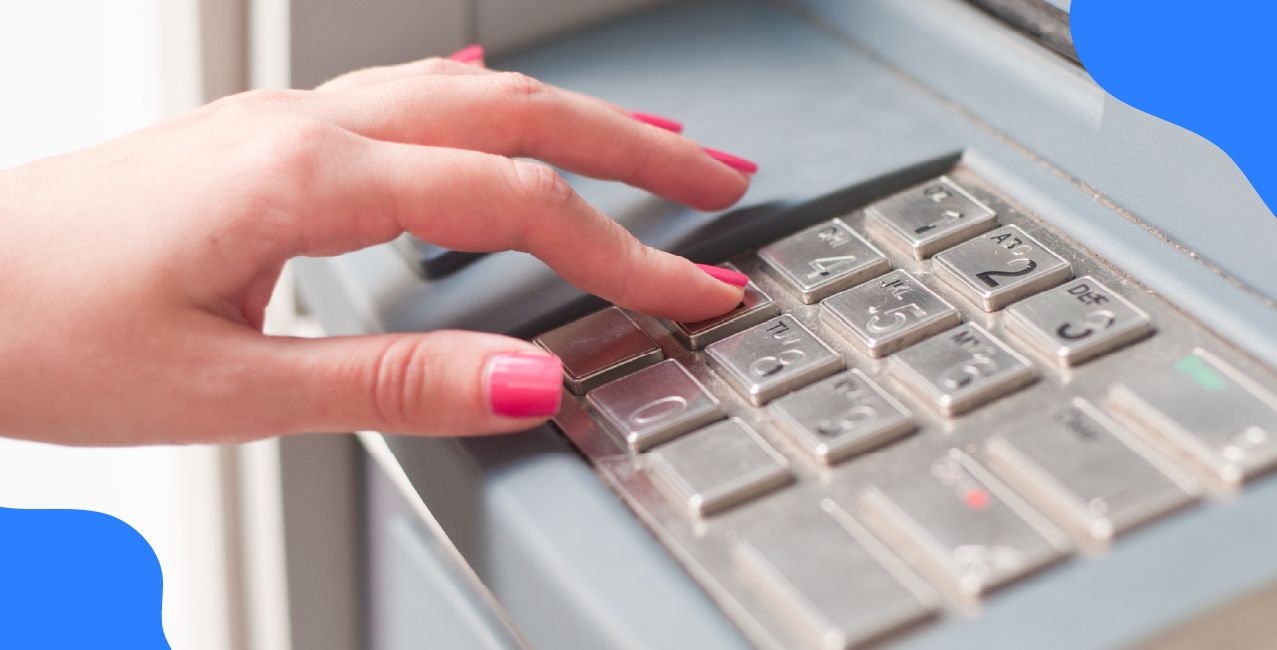
Author
LoansJagat Team
Read Time
6 Min
07 Aug 2025
What is an IFSC Code? Full Form, Format & How to Find It
IFSC stands for Indian Financial System Code. It is a unique 11-character code used to identify bank branches for online transactions like NEFT, RTGS, and IMPS. It ensures safe and accurate fund transfers.
With this, I am suddenly reminded of my brother, Rahul.
On a Monday morning, he was half asleep and tried to transfer rent to his landlord. In a rush, he typed the wrong branch code ‘aur baaki to aap samjhdaar hai hi!’. The money didn’t reach the landlord; his rent was “unpaid,” and he panicked a lot.
‘Arey Rahul bhaiya, ’ why didn’t you read about the IFSC code earlier? This code might look small, but the power it holds is incomprehensible.
To make sure the ‘Rahul’ in all of us doesn’t make the same mistake, let’s understand what IFSC is, how it works, and how to find it easily.
What is an IFSC Code?
An IFSC Code stands for the Indian Financial System Code. It may sound like something big, but it’s just a short ID for your bank branch. Do you know, there are over 1.5 lakh unique IFSC codes across 1,400+ banks in India? This shows how widely digital banking is now available, even in small towns and rural areas.
It has 11 letters and numbers, and helps send money safely through NEFT, RTGS, or IMPS. The RBI gives each bank branch its unique code so your money doesn’t end up in someone else’s chai fund.
What Does This Code Look Like?
If a bank branch participates in online fund transfers such as NEFT, RTGS, and IMPS, it must have an IFSC code. It is an 11-character alphanumeric code, structured as follows:
For example, there is an IFSC code as HDFC0000240. So, this is what the different segments mean:
The code ensures precise identification of bank branches for electronic fund transfers.
It helps in error-free and quick processing of payments across India.
Read More – What Is a CIF Number? Full Form, Use & How To Find It In a Bank Account?
Why do IFSC Codes Matter?
Every time you send money online via NEFT, RTGS, or IMPS, IFSC ensures it reaches the right bank branch. It’s not just a code; it is the reason why banking networks are secure and traceable. Remember these 2 points in case someone asks you the same question:
- IFSC codes ensure accurate routing of payments via NEFT, RTGS, and IMPS, reducing transaction errors and failed transfers
- Each transaction logged with an IFSC allows tracking, audit trails, and adherence to RBI’s digital payment security guidelines.
Where to Find the IFSC Code?
Need your branch’s IFSC? You don’t have to dig deep; your passbook, chequebook, and even banking apps already have it. Let’s look at all the ways you can find it quickly and reliably.
1. On Cheque Book or Passbook
Steps:
- Take your chequebook or passbook issued by the bank.
- Look at the top-left or top-right corner of the cheque leaf or the first page of your passbook.
- The IFSC code will be printed near:
- Bank logo
- Account holder's details
- MICR code and branch address
- It will be an 11-character alphanumeric code, like: SBIN0001234.
2. Bank’s Official Website or Branch Locator
Steps:
- Visit the official website of your bank (e.g., HDFC Bank, SBI, ICICI Bank).
- Look for a menu/tab titled:
- “Branch Locator”
- “IFSC Code Finder”
- Enter the required details:
- Bank Name
- State
- District
- Branch Name
- Click on “Search” or “Submit.”
- The page will show your branch’s IFSC code, address, and contact number.
Always cross-check the bank’s URL to avoid phishing/fake sites.
3. RBI’s Official Website
Steps:
- Visit the RBI’s IFSC search page here: https://www.rbi.org.in.
- Select your Bank Name from the dropdown.
- Enter your State, District, and Branch.
- Click “Submit.”
- The result will show the exact IFSC code, branch address, and MICR code.
This is the most official source. RBI updates the list of NEFT/RTGS-enabled branches regularly.
4. Internet Banking or Mobile App
Steps:
- Log in to your bank’s internet banking portal or mobile banking app.
- Go to ‘My Accounts’ or ‘Account Details’.
- Select the specific account number.
- Look for fields labelled:
- IFSC Code
- Branch Info
- The IFSC code is typically displayed along with the account number and branch name.
Alternate method (via beneficiary addition):
- While adding a new payee, the IFSC code is either auto-filled or needs to be entered manually, and the correct format will be shown as a reference.
5. Third-Party Lookup Tools
Steps:
- Go to popular IFSC search tools such as:
- CodeForBanks
- IFSC Code Finder by BankBazaar
- WallStreetMojo IFSC Lookup
- Enter the following:
- Bank name
- State
- District
- Branch name
- Click “Search” to get:
- IFSC Code
- Branch address
- MICR and contact info
Always double-check the data using RBI’s site or your bank’s official platform.
Once you find your IFSC, save it securely or mark it in your payment app to avoid errors during transactions. The right IFSC ensures fast, accurate, and secure money transfers.
IFSC vs MICR vs SWIFT
Each of these banking codes, IFSC, MICR, and SWIFT, plays a critical role in enabling secure and accurate fund transfers. While they may sound similar, they are used in entirely different contexts: domestic transfers, cheque clearance, and international payments. Let’s know more about MICR and SWIFT in this section.
Also Read - How to Find SBI Account Number – Quick Guide for Customers
1. MICR: Magnetic Ink Character Recognition
The MICR code stands for Magnetic Ink Character Recognition. It is a 9-digit number printed on cheques to speed up their clearance through automated magnetic readers. It’s used only for physical cheque processing and not for online transfers.
The table summarises the details regarding MICR:
When a cheque is submitted for clearance, the MICR code helps it get sorted and verified automatically. This speeds up processing and ensures the cheque reaches the right branch without delays.
For example, there is a MICR Code as: 400002137. This is how one can decode this code:
- 400: City code for Mumbai
- 002: Code for Bank of Baroda
- 137: Branch code for Fort branch, Mumbai
2. SWIFT/BIC: Society for Worldwide Interbank Financial Telecommunication
The SWIFT or BIC code is used for international fund transfers between banks across different countries. It identifies both the bank and its branch globally in the SWIFT network.
Here are further details about SWIFT:
If someone in the US wants to send $1,000 to your HDFC account in India, their bank will need the SWIFT code. This code ensures the money is routed correctly through international banking channels.
For example, we have a SWIFT Code: HDFCINBBXXX. So, here’s how we read it:
- HDFC: Bank code for HDFC Bank
- IN: Country code for India
- BB: Location code for Mumbai
- XXX: Optional placeholder for main branch
Let’s summarise all 3 with the help of this table:
Conclusion
IFSC codes may look small, but they do a big job. They make sure your money goes to the right bank branch, not the one near Prem Gali in Vrindavan. It’s like a GPS for your payments.
If you type even one letter wrong, your money might end up in the wrong place.
Whether you're paying rent, shopping online, or sending money to a friend, always check the IFSC code carefully. It’s the easiest way to keep your money safe and on the right track.
Frequently Asked Questions
Where can I find my bank’s IFSC code?
It’s printed on your cheque book, passbook, or available on the bank’s website and mobile app.
Can IFSC codes change?
Yes, especially during bank mergers. Always recheck if your bank recently changed its name or structure.
Does the IFSC code ever change?
Yes, IFSC can change if your bank merges or restructures. Always check the updated codes before transferring money to avoid failures.
What happens if I enter the wrong IFSC code?
Your transaction may fail or get delayed. In worst cases, money may go to the wrong account if the details match.
Is it safe to share my IFSC code?
Yes, IFSC is public and safe to share. It’s needed to receive payments, not for accessing your account.
Other Informative Pages | |||
About the Author

LoansJagat Team
‘Simplify Finance for Everyone.’ This is the common goal of our team, as we try to explain any topic with relatable examples. From personal to business finance, managing EMIs to becoming debt-free, we do extensive research on each and every parameter, so you don’t have to. Scroll up and have a look at what 15+ years of experience in the BFSI sector looks like.

Quick Apply Loan
Subscribe Now
Related Blog Post


